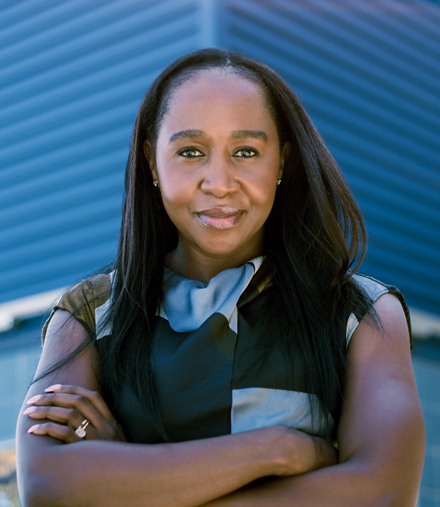The Employee Impact on a Brand
More and more, companies are realizing that their employees play a major part in supporting and building their brand. As the front line of a brand, the way they align themselves with the mission, vision and values of a brand can have a major impact on the success of that brand's perception in the minds of its customers.
In this episode of the podcast, Chris, Bo, Cynthia and Charity discuss the ways brands rely on employees to deliver their brand vision.
Table of Contents
- What is an Employee Value Proposition?
- Why are Employees Important to a Brand?
- How Employees Embody Brand Values
- The Pitfalls of an Unaligned Team
- How to Align a Team with a Brand
This transcript has been edited for clarity and readability.
What is an Employee Value Proposition?
Chris Wilks: Recently, we've been hearing clients talk more and more about their employee value proposition. Why do we think that is, and do we think that that's important for brands?
Bo Bothe: Yeah, I think as we were prepping for this discussion, randomly another client asked, "Hey, we might want to consider our employee value proposition next week."
Employee brand, purpose-driven brands, all of those things have been things we've been talking with clients about for years. The challenge has become, in the restructuring of things after the pandemic, in the changes that we've seen with technology, and with AI added on top, the expectation of working faster, quicker, and even the interpretation of "work harder" is coming to a head.
The ubiquity of workers around the world is making it harder for people to understand and differentiate the brand that they work with. And so I think what we're starting to see, Chris, is a lot of really interesting dynamics in even clients reconsidering or re-imagining their mission, vision, values, the work that they do with the world.
And that all comes from their strategy and them rethinking their strategy. "How are we going to get this work done? Who is going to do the work? What tools do we need to use to do the work?" And in some cases, "What are we?"
And so all of that's culminating into a symptom, which is the employee value proposition. And it really comes down to being clear on, "What is your strategy? Who are you trying to be? And what are you to your customers and to your employees? And then why should I be engaged, all stakeholders, with this brand?"
How do we inspire belief in our team to advocate for us, to know us and understand us as a company, and to go find better people and grow our team the right way to come in and run alongside of us?
And so those are all things that are bouncing around in this crazy topic and what we've been seeing. And Charity brought it up just at this call today, somebody asked about it. So it's a really, really interesting topic for us to chat about today.
Why are Employees Important to a Brand?
Charity Ndisengei: The reality is, your employees are your biggest brand ambassador. They're considered the most significant brand ambassadors because they're the people who engage with your customers the most.
We talk about this a lot, and I know you guys are probably tired of hearing me say this, but we talk about not managing brands, but managing perceptions. And perceptions being formed by interactions. Those interactions are usually with your customers, are held by your employees.
You're not going to have the CEO speaking to your customer on a day-to-day basis. It's something that needs to be inculcated within the employees around what our mission is, what our value is, what the culture of the organization is, and that's what forms perceptions.
So they must be aligned with the company values, and engaged with the organization because they are forming or helping form those perceptions with our customers.
Cynthia Stipeche: Yeah. And then if your employees are out there talking about your organization, they're re-sharing content on their social channels, whatever, with peers. It stands out and it increases confidence in that organization.
So, they're acting in the role of brand advocate from the inside out. That's extremely important as well because when they're dealing with peers or other individuals outside of the organization, the trust level increases when you see that the employees are actually engaging with that branded content and speaking positively about your organization.
Bo: And acting positively, too. I think that when you look at, Chick-fil-A's "my pleasure," when people are well-trained, when they understand the brand, when they understand the value of the brand to them and the value that they provide the brand, those two things being able to connect can inspire belief to a point that others around them in the periphery start to get it.
So just because they share something cool that their company has done, but then they advocate for it, but then they wear the t-shirt, etc... The depth at which the internal stakeholder advocates is also more critical than just the advocacy. We see it in all kinds of brands that people buy into and they become leadership brands that people understand the purpose of and are aligned with.
And so, how do you do that? Because we've seen the value of organizations go up, the value of products goes up, and people are willing to pay more price, willing to be more loyal. Those things, B2B or B2C are critical in today's economy and in the way the world's working.
And even employee culture has changed, where power sits, those kinds of things. The voice that a teammate or somebody within an organization has is so much greater now than it has been that that's impacting a lot of what we're seeing as well.
Charity: So Bo mentioned two pretty critical things. We spoke about customer engagement and the experience of hitting the road when you deal with someone on a day-to-day basis. And then the second thing, the other thing that he spoke about was loyalty.
A lot of companies back in the day when manufacturing was key, everyone would say, "I've got a really brilliant product. I'm the most innovative company." The reality is brand loyalty isn't built by a great product. It's built by experience. Again, 96% of loyalty comes from customer experience.
That's where it comes from. It's not just that there's a great product. I could love Apple to bits, but if their service and after-sales service is shoddy, that's the last time I'm buying an Apple product.
But then the thing that really has gotten a lot of CEOs and CFOs and growth officers hooking up is the revenue conversation.
The reality is that 84% of companies that have worked to improve their customer experience see more revenue. And the size of revenue that you see is about 5.7 to six times larger than their competitors. So it's absolutely imperative. It's not just an airy-fairy thing. It really hits your bottom line.
How Employees Embody Brand Values
Chris: Something stands out to me here:your employees embody and carry out your brand. Charity, you talked about perceptions, and how we manage perceptions.
If you're dealing with a customer service rep or if you're a service provider and this person is providing whatever service, whether it's consulting or whatever it might be, the way that they do that, the way that they speak, the way they communicate, is that the brand? Do you guys agree that the employees are the ones that, more often than not, are the ones that are carrying out the brand?
Charity: 100%. They're the embodiment of your values.
Cynthia: I was going to say that when you have a disengaged workforce or when they're just disenchanted with the brand or the organization they work with, you're going to feel that as a customer.
It's a phone call to company X to ask for customer service or help with something or walking through the door to a certain company. It's the way they greet you at the door, if it's lackluster, it's a presentation, it's the dirty uniforms, all those things start to rub off and it's your perception of the brand.
It's like, "If they don't care, then does the brand really care about what they're offering or selling?" So it's all tied in together.
Charity: I was speaking about the example that you gave earlier of Chick-fil-A, we all know what Chick-fil-A stands for and what the brand values are, but it is embodied in every single person. Their customer service is the embodiment of the organizational values. The fact that they're closed on a Sunday is something they treat as part of the employee value proposition, to be honest.
The organization behaves in a way that reinforces its values and therefore, when you are paying for your spicy Chick-fil-A sandwich and the person says, "Thank you, have a great day," and gives you a cookie for free or pays for your meal because you forgot your card at home, that's the embodiment of the organizational values.
Bo: Empowerment, training, clarity, transparency. All of those things go into it. And then you add to this, I think the dynamic that people are missing, and I've been doing little videos and talking about this for a couple of years now, I've couched it as the commoditization of everything.
I used to joke about, if you're a ball bearing company, the only thing that matters is round, small and on time, right? As long as those quarter-inch ball bearings are smooth and round and the price is right, I want it, but getting it to me on time when I need it, reliability of delivery, all of those things go into my perception of that seemingly "anything I can get anywhere" product.
And the world's gotten bigger, it's the Amazon effect. I can get anything at my door tomorrow. Every product's the same. In the mind of the consumer, the products just start to become so uniform, but the questions of quality, "Does it fall apart? Is it delivered on time? Are the partners that are delivering it, delivering it in a good way...?" All of that stuff, to Cynthia's point, all of those things go into the emotional piece of the brand.
What makes a brand different then? If the ball bearings are all round and smooth, what makes me pay a penny more for Johnny's ball bearing as opposed to Tim's ball bearing? It's the service and the quality and the expectation that I have. And to bring this back to employee brand, people being able to deliver on the promises that the company is making is going to be paramount when I can get 500 of the same thing from anywhere in the world tomorrow.
And so how do we make that, whether that's a million-dollar valve or a one-cent ball bearing? Those are things, especially in B2B, that are going to become more important.
Cynthia: Especially in working for organizations where it's customer-facing. Person-to-person, face-to-face interactions, thinking about hotels or anything where you're walking into the building or experience and it's like, "That is the brand."
It's talking to the person, it's engaging with them, it's them making sure they're answering their questions. So there's nothing to hide behind. So even with that, even more important that they fit, they believe in the brand, they understand what they stand for.
And that it's clearly communicated, just demonstrated by that daily interaction with customers. So, that alignment, they can't can't mess up on that because it's just so obvious in your face.
Chris: Is it a fair statement to say that your employees are the biggest asset of your brand?
Cynthia: Absolutely. So organizations exist and you need people to help them be living, breathing things that people engage with. In the end, there there's that human element that I think will always be there.
Bo: Yep. If everybody understands the promise that the organization is making to both the internal stakeholder and teammate and to the customer and to the market and to the shareholder and to the leadership and to the environmental partner and to the community partner.
If all of that's aligned, and to Cynthia's point, if everybody's got a clean uniform and it all makes sense, it all delivers the way it's supposed to deliver. And people are trained the right way everything moves smoother, everything moves quicker.
And I think in the new economy, we're bending the robots to our will, and internal stakeholders are using tools and technologies to help them do what they do best faster and create and make the things that they need to make better, faster and quicker for the impatient consumer that needs something.
The pace of industry, man, if that's all moving right, the people buy in and they can win when interacting with the consumer or when interacting in those places where it matters and filling the white space.
And I think that brands are going to need to reconcile with the fact that they have to pay their people more so they will provide a better product and service. So that their people are rested, well-fed, well taken care of so that they can produce the perceived value. The actual value, which is this thing's delivered on time quickly, is better every time.
How do you reconcile that with those key stakeholders, not just the message in the story, but the whole system aligns with the brand promise that you're making to your customer.
The Pitfalls of an Unaligned Team
Chris: Let's say you don't have all this aligned. Your employees are maybe a little unclear about what your brand proposition is about. What are some of the dangers of not having your employees aligned behind your brand, and carrying out your brand in a consistent and, I guess, effective manner?
Cynthia: So BrandExtract, we say that we want to inspire belief in organizations and people in everything, brands, you name it. And I think also that people want to work for organizations they believe in, and that they trust.
The problem with misalignment between the brand and the employee experience and how they're performing their work is beyond dangerous because the advertising and the marketing can say all it wants about how awesome a product or a service or something might be. But if your impression of that is based off of some poor experiences with customer service that can ruin your perception of the brand.
For example, you go to the airport, you get in front of the desk, and they're disheveled looking, and they're in a bad mood, and they don't respond to your questions, and they really don't care, it's going to leave a bad taste in your mouth.
So that's a danger. It's like they are chipping away at your brand. Or if the organization's not taking care of handling employee perception of the brand or educating them on the brand, then it's like you're damaging the organization as a whole. The value of it is just eroding left and right.
Charity: It's also your most engaged employees. People who are aligned with a really strong EVP are the most productive employees that you have, right? So one, it affects your productivity if they're not engaged. It affects your company culture. We all know how important company culture is.
For the last two years at least, we've been talking about how this is an employee market, right? They're determining where they want to work and the quality of the places that they want to work. It's not just about giving them a paycheck. It's about the quality of the environment that I get to work in. Are our values aligned? Am I in an environment that will grow me that I think from a personal perspective?
If you don't have an EVP and employee value proposition that they're aligned with, it's not going to be a good workplace.
And therefore, what you end up doing is that you start losing people, right? And what does that do? There's a cost in trying to recruit new people. And it's not just a financial cost. There's a cost in that there isn't consistency in your brand because you've got a bunch of new people who aren't aligned or don't know what your brand is yet.
It'll take time for them to ramp up and get to where they should be. So in that time, it leaves your customers with erratic or inconsistent service. It's a cost, not just financially. It impacts your customers at the end of the day because you don't have trained, trusted employees who are aware of your brand, who are aligned with your brand and speak to your brand values.
Bo: Yeah. At its simplest, it makes you a little less efficient, a little bit questioned by the consumer or the external person that's considering coming onto the organization. At the worst, the customers are almost allergic to you because of the noise and sentiment, and they can't even see, they've blocked you out.
I wouldn't say cancel because I hate that term, but there's a point where because you've had so many bad experiences, so many people have had so many bad experiences and the employees inside, either they may care, but they may not know how to care the right way.
And it's so consistent or even inconsistent. It almost repels you from the product. And again, in a marketplace like today where things are fast and I have so many options, the slow death that 20 years ago a company would have gone down happens in the next year.
I think that leaders need to look at this and think about this harder because things are happening so much faster than they used to. You could give horrible customer service and live for 10 years and still make some profit. Today, you may not make it through the year.
We've seen it happen where a company has broken trust and very quickly you're like, "Where did that multi-billion dollar company go?" And they're absorbed into something else or they're moving. That's going to happen faster, almost to a point where they can't be absorbed.
I think that that's one of the challenges that we're seeing is the speed at which we need to learn to produce for our customers. And this is internal for them. The speed at which they're expecting things because they see how fast they need to fix, change and do because they see the negative so fast is not something that we're all used to.
And it's not something that an organization internally is used to training fast, spending the money, getting people up to speed, paying them well, all those kinds of things. If those things aren't taken care of, they can be really detrimental really fast compared to what it was 10, 20 years ago when we all learned how to run businesses.
So I think that's a consideration. The speed at which things are failing and the speed at which promises are being made and having to be delivered is a dynamic that puts the employee and the business leader in a really interesting situation.
Think about Chick-fil-A, right? Now I've got four lanes that I've expanded all my things and they've got to deliver on that same promise. And the person who runs the food out to you and hands it to you in the car, to the online experience of ordering it. Man, that's a super dynamic thing to try and train, manage and work with and the complexity of that is so much.
I think that brands need to start to understand the complexity in which their people are working. It is a lot more complex today and we all need to get better at explaining that complexity.
Charity: The other part of that is how quickly information goes around. And more and more as we're looking at building brand strategies and building marketing plans for our customers, one of the things that we're customers are really asking for is, can you look at what the glass doors of the world want from me? Those types of sites.
And the reason why that's important is what's the first thing any person who's researching a company that they want to join look at? They look at those review sites. If your employees are giving you bad reviews, in all likelihood, real talented employees or potential employees will not want to join your organization.
Chris: Yeah. And, interestingly, you're talking about employees who can be on the front lines or talking to customers. In that way, I feel like your employees can shape your brand.
We think of business decisions and things like that typically coming from the top down. But I think if everybody is aligned and there's, I'm going to use Cynthia's favorite word, synergy. If everybody's aligned and pulling in the right direction, that innovation and that shaping of the brand can really come from the front-line employees. So I think that's interesting.
Cynthia: Going back to misalignment, and I think just the worst symptom of that is losing employees, high employee turnover, loss of historic knowledge. And you think about when organizations are misaligned, if there is a negative sentiment, people are leaving, just bad performance.
You always have high performers. It might be the ones who are just pushing through to make things happen. And you could have management within the company or executive leadership saying, "We're still making it through. We've lost people." But at a certain point, even the high performers can't keep all the plates and everything up in the air.
And that's the important thing, too, with, I think, looking not just outside the organization, but really looking inside to see what's happening culturally and emotionally with your people.
Because again, back to what Bo was saying earlier, you want to make sure that folks have the right environment, they get paid the right amount, they have the ability to take time off and it's a healthy work environment. It's a place they believe in. Because when you lose people, it starts chipping away at that workforce and that knowledge. And that's a major problem, too.
Chris: It's hard to stop that negative momentum. If you don't have these things squared away, if you're not thinking about these sorts of things, once that ball gets rolling, you can potentially have some folks who are really aligned with the brand and believe in it, but because of other things happening and maybe other folks not being totally aligned, they have to bear some of that weight.
And then it starts to disrupt culture, starts to disrupt retention. It starts to disrupt the way that folks interact with clients and customers. And so it bleeds it. So it really is all connected. And I think it underscores the importance of having your employees aligned and engaged and believing in the brand.
Cynthia: Yeah. And back to the whole thing with EVP, an organization might say, Organization X says, "We have a brand. We have mission, vision, values. We have all that", but are you engaging and communicating that to your employees in such a way that it resonates and it makes sense to them so they can then go outside the organization or continue to act and provide a service that aligns with those higher level corporate brand values, mission and everything else?
Charity: And I will go a step further to say, not just are you communicating it, are you showcasing it? If you need to talk about having a culture of celebration, then celebrate your people. It's about actually showcasing it, not just having the words on a website.
Bo: Ingraining those values, ingraining that mission, ingraining the hiring qualities in the interview process, in the onboarding process, in the review process over time, into the employee ratings and saying hi to people. Like at BrandExtract, we have a system where we give people high-fives, those high-fives are based on the awards that we give.
Those are things that we give based on values. And sometimes they just click, "Oh, they did all the values", but they at least see them. And sometimes people are really thoughtful to say, "Be curious is a value of ours". OK, well, this person asked the right questions at the right time. They just didn't keep asking questions.
Those are the things where all of a sudden the poster on the wall isn't just a poster on the wall, right? It's how we live, act and how we expect to be treated as well. And I think that those are things that leadership then needs to ingrain in the things they talk about, show and espouse in the way they act and react to things.
Because that's the other thing to talk about on the internal branding part is, how does an organization react? You react to bad medicine, you respond to good. How does an organization react and respond to things that happen in a way that are true to their internal brand and their values?
That takes training and that takes effort and that takes all the time and everybody living it to make it consistent.
Charity: I'm really proud of the way that we at BrandExtract actually include cultural interviews when we're interviewing people. And I can guarantee you, by and large, every single person that I speak to and I talk to them about the cultural interview and why it's important and why we do it and why we have a lengthy hiring process and how important our values are, ensuring that they're in the right place and have the same values or espouse to the same values.
Every single person turns around and says they absolutely love that because that is part of your EVP. The reality is you want to be in a place that feels like you are part of something and part of a set of values.
Bo: They get to see the culture that they're choosing to be a part of. And I think that's critical and people forget this, especially in any kind of EVP exercise or mission, vision, values and return. We don't just want people to do something, we want people that want to do it with us.
And I think that every company wants that but they may not build those things into the process to make sure that the external person feels like they're choosing to be there. I mean, there are, and to your point, Charity, people have a lot more power within the organizations they work for and choosing who they work for.
Man, be an employer of choice. Be a culture of choice, but make sure, and I think that's the key to those kinds of interviews, they get to opt in. We want them to opt into our culture. And so we have to signal it in the interview process. And part of signaling it is introducing them to a greater portion of our people.
Because those are the people that are living it and doing it every day. I think you're right, Charity, it's just getting that into the whole process, internal, external, all that stuff allows you to get on top of just the training and getting the right person that can be trained the right way to do it the way that we need to do it.
To live our culture or that an organization to live their culture. I mean, again, branding, not as simple as, "Here's a poster, here's a word, here are the right colors. It's all consistent." It goes into operational parts of how you hire, who you hire, how you manage, who you manage, and how you hold people accountable to the things you believe.
How to Align a Team With a Brand
Chris: We talked about the risks of not having this sorted out. We talked about the benefits of having it sorted out. How do you get this right? How do you do that? What are some of the tips or advice you'd give to someone trying to make that work?
Charity: For me, it's realizing that your internal stakeholder is just as important as your external stakeholder. If you are looking at writing a brand strategy, a marketing strategy, a communication strategy, whatever it is. If your internal stakeholder is not part of your target audience, there's a problem right there.
Cynthia: Yeah, I love that you brought up my favorite target audience. And we go back to the whole thing, really trying to like, "Who are we talking to?" And it's like looking inward in that respect, looking at your internal audience is huge, especially when you're working on your EVP.
I think we always talk about developing experiences that have empathy for the end user or that persona, that individual representative figure type. But developing empathy for your employees is big.
So whenever we develop brands and we put together all the messaging and everything else, we look inward too and work with our clients to make sure that we transfer that brand over to this internal audience.
So it's something that we intentionally look at every time we develop a brand. And there are times when we're a bit more focused on that type of engagement where it really is hyper-focused on the employee experience.
Bo: Yeah, so beyond just considering your internal audience, beyond the experience that they have with your company and your organization and with the customers you choose to work with, there's the consistency.
The consistency of training, the consistency of conversations, and the consistency of leadership, I think, is a critical component to that. It's one thing we see all the time, a new brand is about to be launched, leadership videos, CEO, we introduce the CFO, we introduce the CEO, we get them all out there, they get all involved, they go do road shows and they meet everybody, and then nobody sees them again because they're off talking to the street.
That can work, but again, in this economy, and in this environment, and in the great restructuring of everything, culture, economy, community. That consistency of leadership and the consistency of message and story, and the experience and the consideration is going to go a long way to taking away the headwinds, and then getting the wind behind your sails and moving forward.
It's consistency, not of just messages and posters and colors and sayings and slogans, but it's a consistency of leadership and the team talking about adjusting, reviewing, looking at and sharing the right types of experiences so that everybody can reset regularly on what's going on, and they're reminded regularly, what are we trying to achieve, where are we trying to go, how are we going to do it? Which is really what the internal brand is.
And my understanding of the vision of the organization, my internalization of that and buying into it, and then my externalization of that vision in a way that works with the values that we espouse to share, not just with each other internally, but externally to our external stakeholders as well, our customers and prospective employees and shareholders.
I think that consistency of leadership and consistency of message and story and consistency of transparency is a big part of this.
It turns into a consideration of some sort of plan built into everything we're going to communicate about. The consideration of the experience, how I feel when I walk in the door, when I see things, when I interact with somebody that, that man, that's a lot more complicated for a company that's making ball bearings, but it's got to be a part of it. Because it's not just about the ball bearing anymore, because there are so many people that sell the ball bearing.






